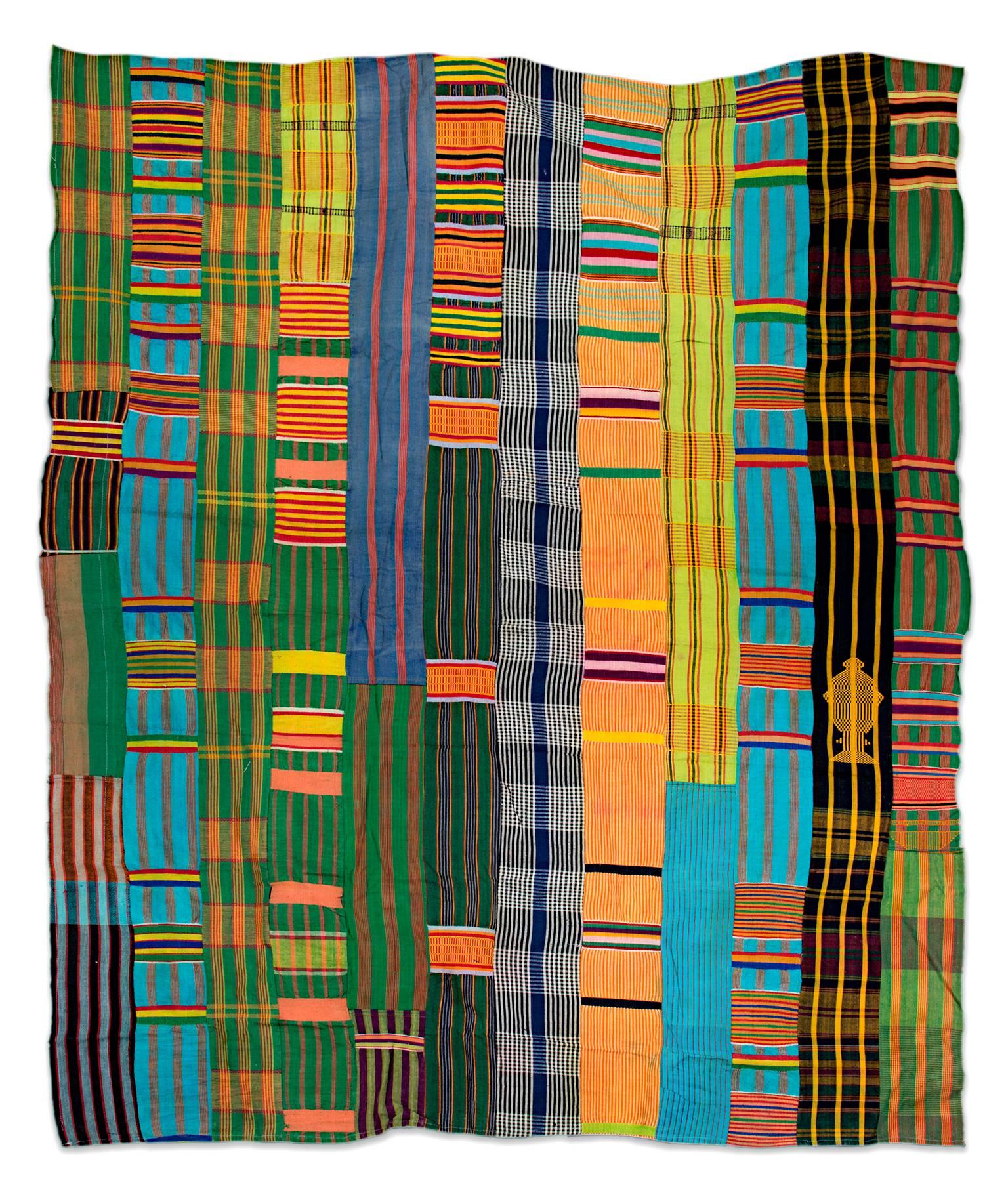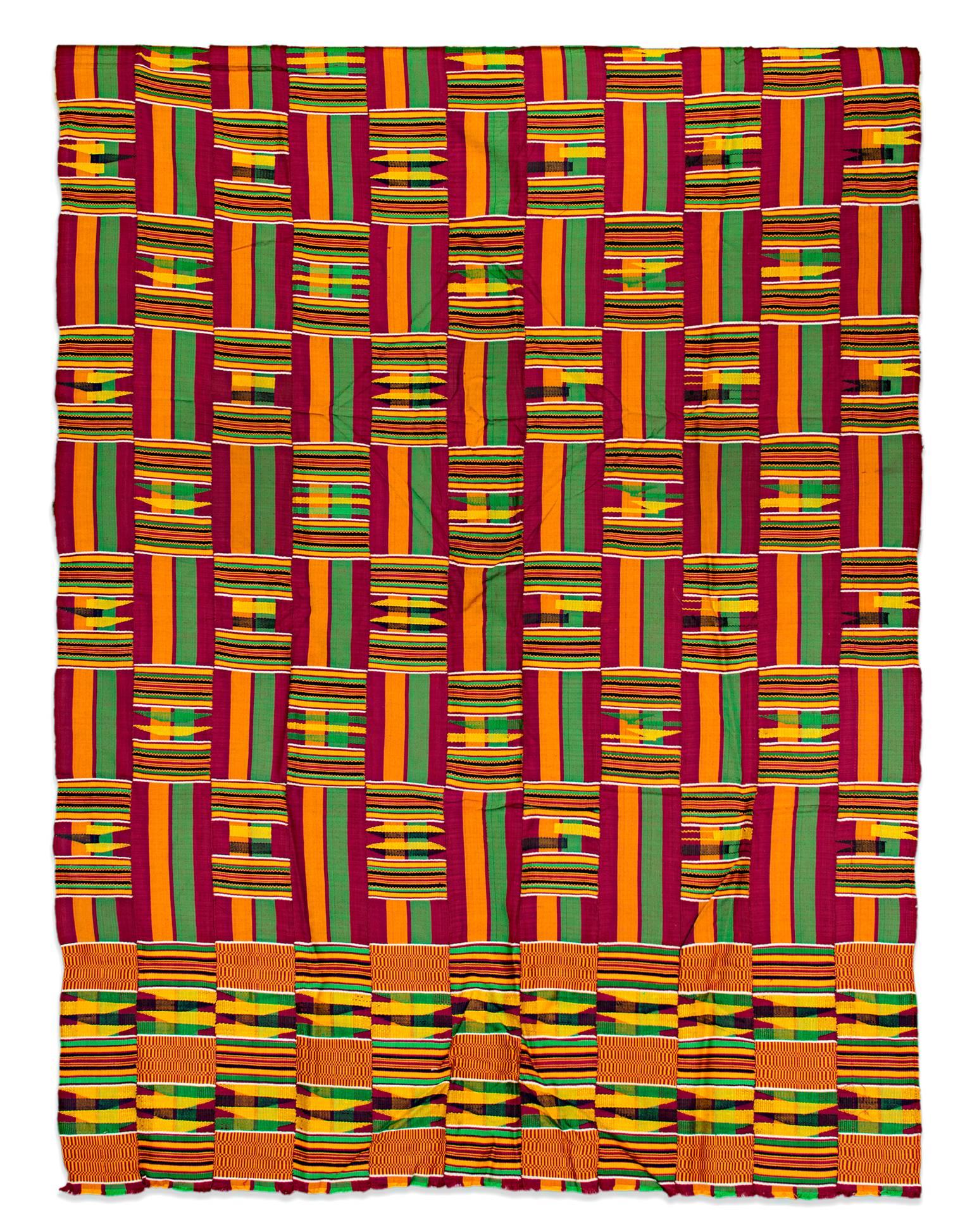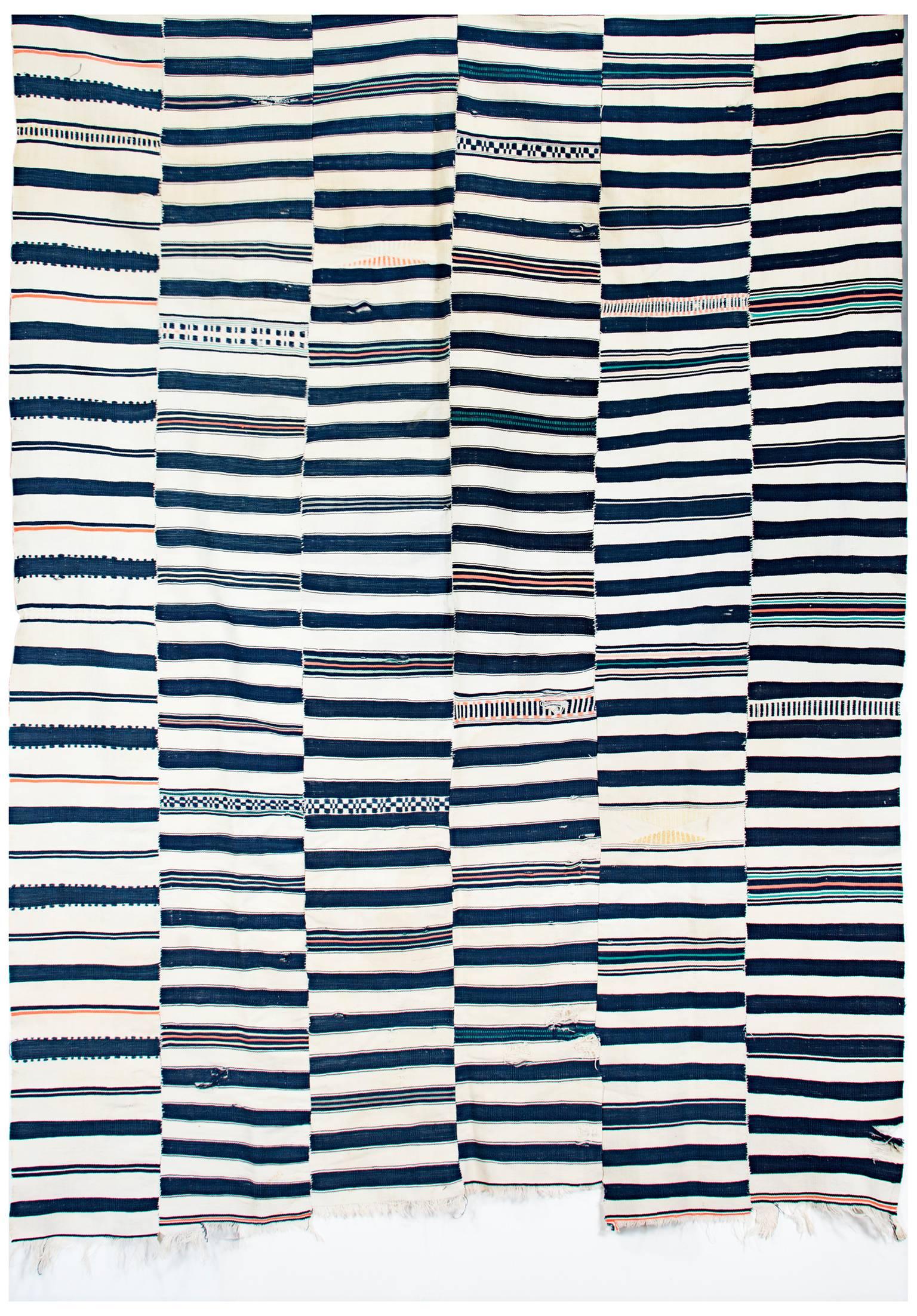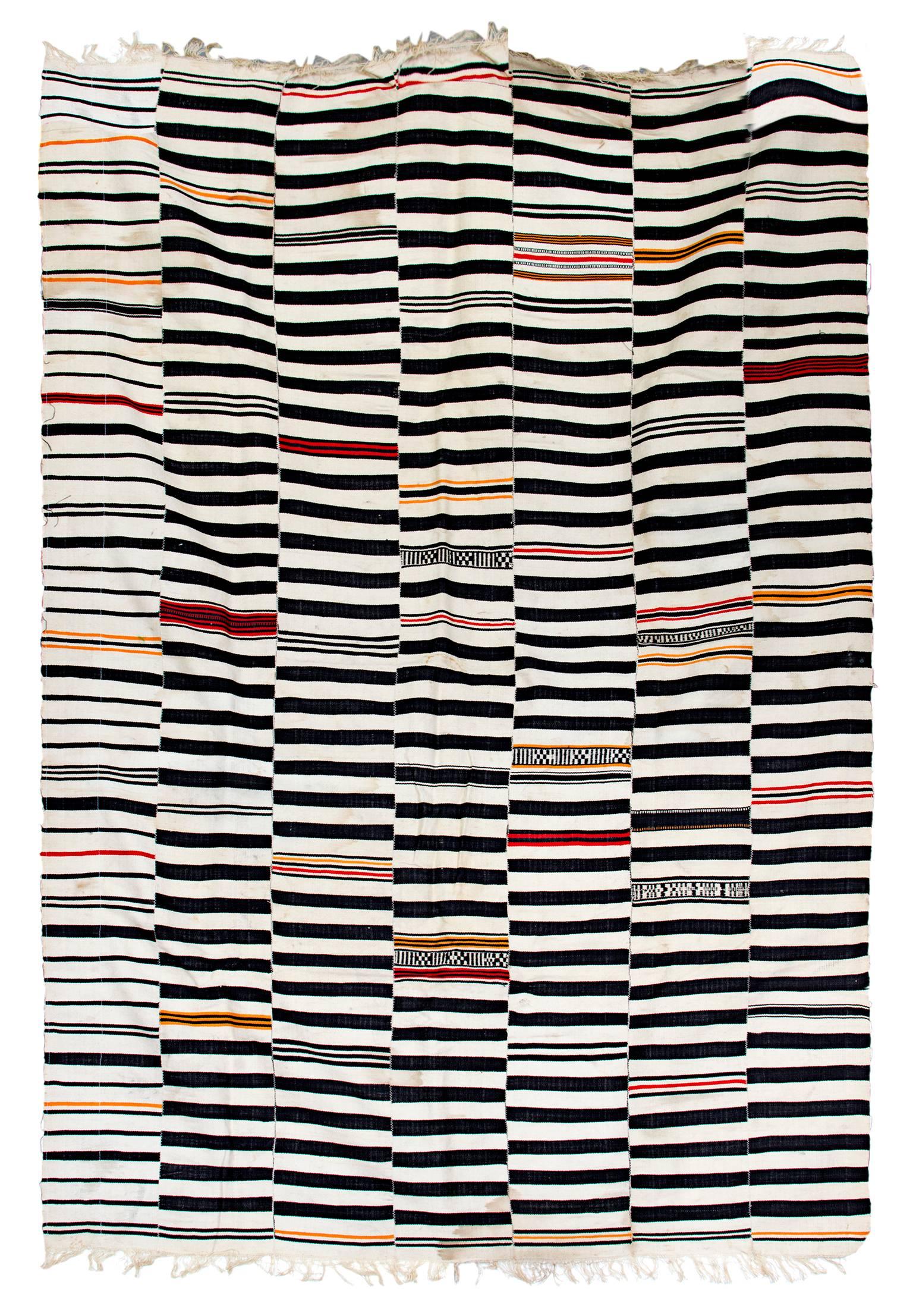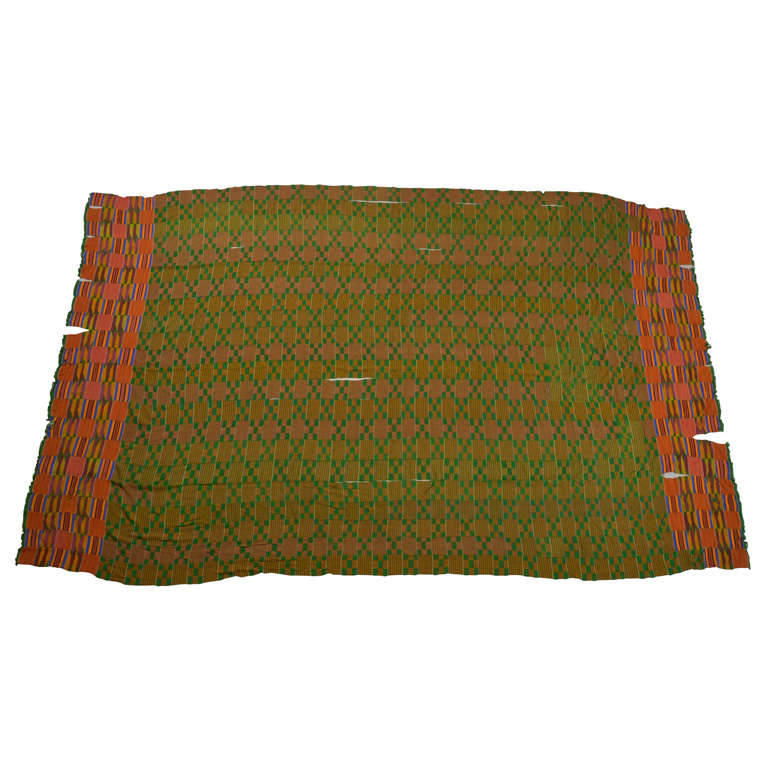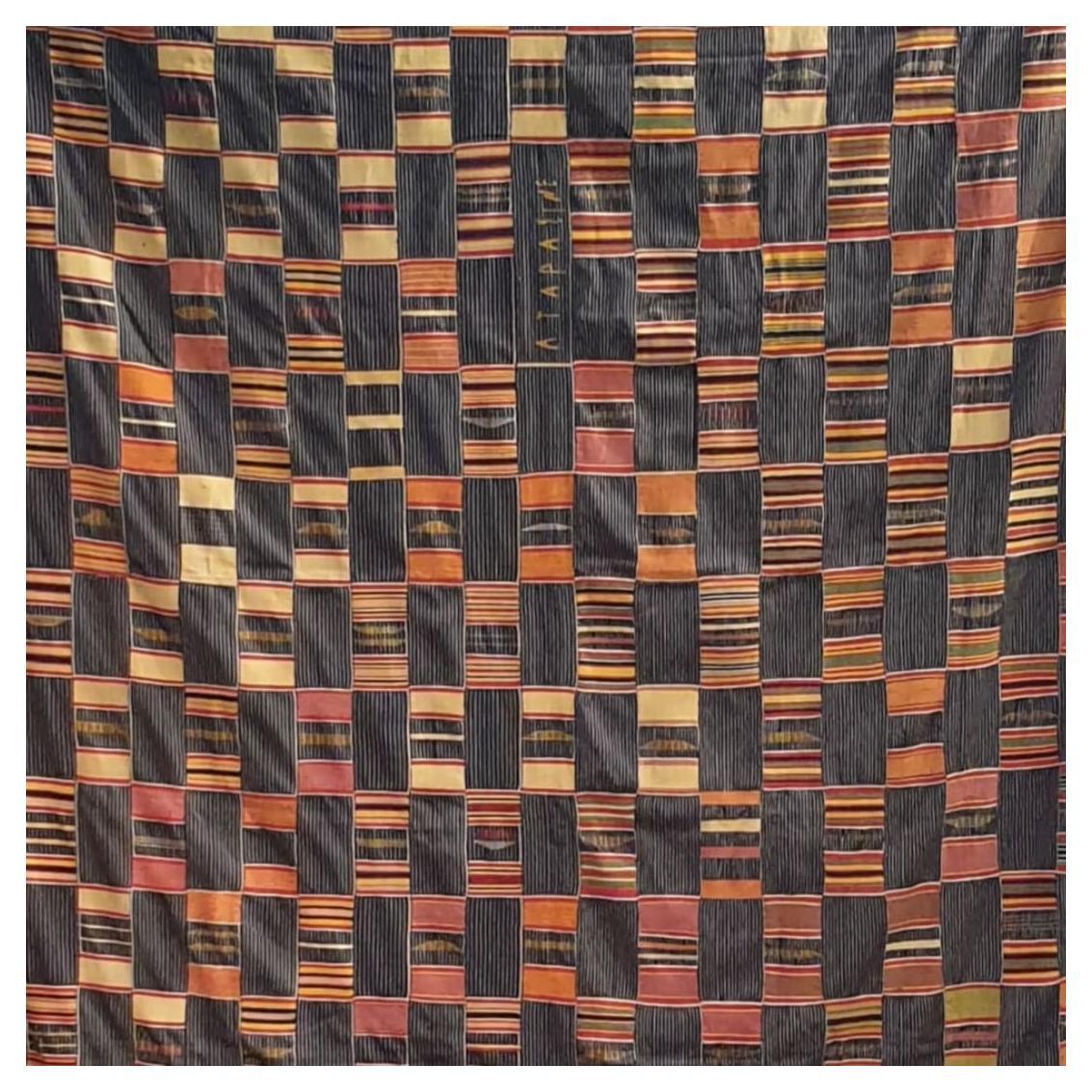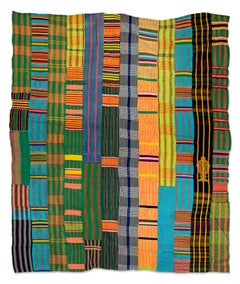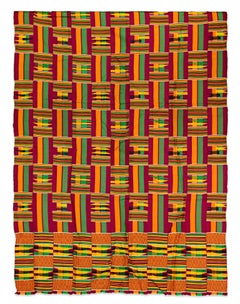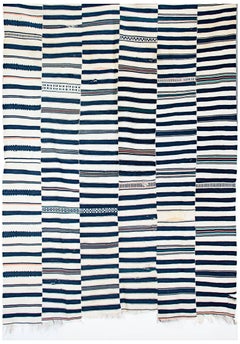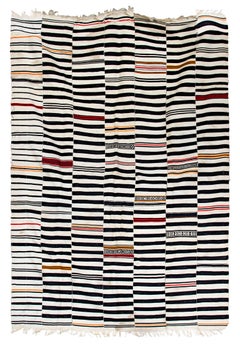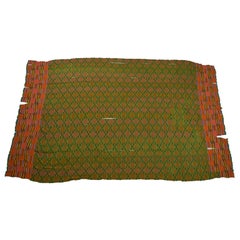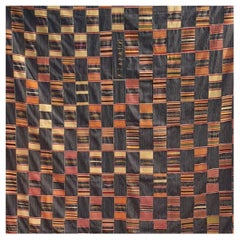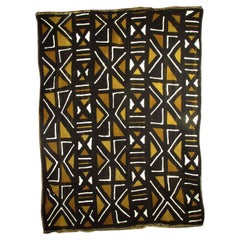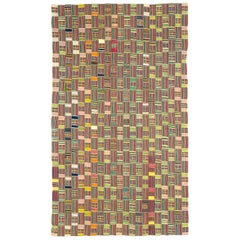Items Similar to "Fabric - Ashanti Tribal Cloth, " Silk Weaving from Africa circa 1930
Want more images or videos?
Request additional images or videos from the seller
1 of 6
Unknown"Fabric - Ashanti Tribal Cloth, " Silk Weaving from Africa circa 1930circa 1930
circa 1930
$10,875
£8,278.27
€9,542.78
CA$15,487.33
A$16,891.61
CHF 8,880.92
MX$204,332.86
NOK 110,822.82
SEK 104,717.03
DKK 71,244
About the Item
Among the most well-known West African textiles is kente cloth, woven by the Ewe and Asante peoples of Ghana. The word kente is not used by the Asante people; it may be derived from the Fante word kenten ("basket") which refers to the checkerboard appearance of the cloths. Both cultures weave similar types of cloth. Kente is known as "prestige cloth" because it has been a symbol of status and wealth for its wearers. Once the textile of kings, it is now worn by anyone who can afford it.
The Asante people controlled the only source of gold available to pre-Columbian Christendom. They prospered through trade with the Portuguese, Dutch, British, and other European traders. Their great wealth allowed the king and court to commission sumptuous and densely patterned cloth for royal textiles. As there are no silkworms indigenous to Ghana, Asante leaders acquired silk textiles through trade. Local artists then unraveled the cloths to obtain silk threads of many colors to be used in the weaving of cloth. Alternatively, Italian waste silk was brought down by camel caravan across the Sahara. The influx of imported fibers allowed the kente palette to be dramatically intensified. Asante kente is the product of narrow band or stripweaving done by men on a horizontal loom with four heddles. Stripweaving as a method of manufacturing cloth is most characteristic of West Africa. Asante kente cloth is characterized by vibrant colors and complex patterning.
Historically, the textile was made of silk. This brocade cloth is made of twenty to twenty-four strips about four inches wide sewn together selvedge to selvedge to make a man's garment. It is draped, toga-like around the body with one loose end brought up and over the left shoulder. Clothes for women are smaller and worn in pairs wrapped tightly around the body. Asante patterns are non-representational. Each pattern of background warp has a distinctive name as does each weft pattern and whole cloths also have names.
About the Seller
4.9
Gold Seller
Premium sellers maintaining a 4.3+ rating and 24-hour response times
Established in 1966
1stDibs seller since 2017
451 sales on 1stDibs
Typical response time: 2 hours
- ShippingRetrieving quote...Shipping from: Milwaukee, WI
- Return Policy
Authenticity Guarantee
In the unlikely event there’s an issue with an item’s authenticity, contact us within 1 year for a full refund. DetailsMoney-Back Guarantee
If your item is not as described, is damaged in transit, or does not arrive, contact us within 7 days for a full refund. Details24-Hour Cancellation
You have a 24-hour grace period in which to reconsider your purchase, with no questions asked.Vetted Professional Sellers
Our world-class sellers must adhere to strict standards for service and quality, maintaining the integrity of our listings.Price-Match Guarantee
If you find that a seller listed the same item for a lower price elsewhere, we’ll match it.Trusted Global Delivery
Our best-in-class carrier network provides specialized shipping options worldwide, including custom delivery.More From This Seller
View All"Tribal Cloth, Ewe Ghana, " Multicolored Cotton Textile created circa 1965
Located in Milwaukee, WI
The Ewe people from Ghana are master weavers. People of means commission cloths called adanudo ("skilled/wise cloths"). Ewe adanudo textiles often display a tweed effect by twisting ...
Category
1960s Folk Art More Art
Materials
Cotton
"Kente Cloth Ashanti Tribe, Ghana, " Silk and Cotton Weaving created circa 1970
Located in Milwaukee, WI
This silk and cotton fabric was made by an unknown Ashanti artist. It features green and orange accents. The Ashanti are a major ethnic group of the Akans in Ghana, a fairly new nation, barely more than 50 years old. Ghana, previously the Gold Coast, was a British colony until 1957. It is now politically separated into four main parts. Ashanti is in the center and Kumasi is the capital.
The Ashanti have a wide variety of arts. Bark cloth was used for clothing before weaving was introduced. With weaving, there is cotton and silk. Women may pick cotton...
Category
1970s Folk Art More Art
Materials
Cotton, Silk
"Kente Cloth, Ashanti Tribe Ghana, " Cotton Weaving created circa 1970
Located in Milwaukee, WI
This cotton fabric was made by an unknown Ashanti artist. It is mostly black and white. The Ashanti are a major ethnic group of the Akans in Ghana, a fairly new nation, barely more than 50 years old. Ghana, previously the Gold Coast, was a British colony until 1957. It is now politically separated into four main parts. Ashanti is in the center and Kumasi is the capital.
The Ashanti have a wide variety of arts. Bark cloth was used for clothing before weaving was introduced. With weaving, there is cotton and silk. Women may pick cotton...
Category
1970s Folk Art More Art
Materials
Cotton
"Fulani Body Wrap Tribal cloth, Gambia, " Cloth created c. 1970
Located in Milwaukee, WI
This tribal cloth was created by an unknown artist from the Fulani tribe in Gambia, Africa. This tribe has a population numbering between 20 and 25 millio...
Category
1970s More Art
Materials
Fabric, Textile
"Ceremonial Hunting Shirt - Yoruba, Nigeria, " Glass Beads, Shells, & Cloth
Located in Milwaukee, WI
For the Yoruba people of Nigeria, beads and shells are applied to ceremonial garments and headdresses. Beads are an important part of Yoruba culture. henry John Drewal has written th...
Category
1940s Folk Art More Art
Materials
Fabric, Glass, Found Objects
Kilim Rug Hand-woven design, under $4500
Located in Milwaukee, WI
This Kilim rug was hand woven in Turkey, circa mid-20th century. It features patterns in yellow, gray, white, brown, and pink in a beautiful geometric design. Priced under $4500, this rug is sure to be enjoyed with several design schemes as it works in both modern and antique settings. Lovers of carpets will appreciate the wool under their feet as they keep their interior both stylish and comfortable.
Kilim rugs are a pileless rug woven using just one of numerous flat weaving techniques that originated in parts of Turkey. Other geographical areas producing kilim style rug weaving include Iran, North Africa, Afghanistan, Pakistan, China, the Balkans, Central Asia, and the Caucasus. Perfect for the design lovers sale...
Category
Mid-20th Century Folk Art More Art
Materials
Wool, Textile, Organic Material
You May Also Like
African Ashanti Kente Cloth
Located in Dallas, TX
African Ashanti Kente Cloth,
hand loomed textile, ceremonial regalia worn by the tribe early to mid 20th Century
Category
20th Century African Tribal Art
Ewe Kente
By Ewe People
Located in Glasgow, GB
This is a fine piecevof Kente Textile from the Ewe people of the Volta region of Ghana. Woven from handspun cotton and natural dyes. This is a prestige cloth worn by a high ranking Elder of the Ewe people. The pattern denotes the individuals high status within the community with the dark blue background indicating the wisdom and knowledge of the owner. This piece will date from the 1930's and is in very fine condition. Ewe Kente...
Category
Vintage 1930s Ghanaian Tribal Tribal Art
Materials
Cotton
Mud Cloth 'Bogolanfini', Mali, Bamana People, Mid-20th Century
Located in Ottawa, Ontario
A mud cloth (Bogolanfini),
Mali, Bamana People
mid-20th century.
Hand woven 'discharge dyed' cotton
Approximately 71 x 52 in. (180cm. x 132cm.)
A dazzling geometric pattern...
Category
Mid-20th Century Malian Tribal Tribal Art
Materials
Fabric
Vintage Multicolor West African Ewe Kente Cloth Textile Fabric or Wall Hanging
Located in New York, NY
This prestigious Kente cloth was handwoven on small hand held looms. The fabric has all been hand sewn to form a marvelous textile. These were originally m...
Category
Mid-20th Century Ghanaian Tribal Quilts and Blankets
Materials
Cotton
Early 20th Century Geometric African Kuba Cloth
Located in San Francisco, CA
African Kuba cloth. Collection of Lucille A. Lamkin.
Category
Early 20th Century Moroccan and North African Rugs
Kuba Shoowa Textile 20th Century
Located in Point Richmond, CA
Shoowa Prestige Cloth
D.R.Congo, Kuba (Shoowa) People
Mid 20th century
Raffia, natural dyes, cut pile embroidery
61 x 53.5 cm (24″ x 21”)
Provenance: Pierre Loos Collection, Bru...
Category
Early 20th Century Congolese Tribal Tribal Art
Materials
Natural Fiber
